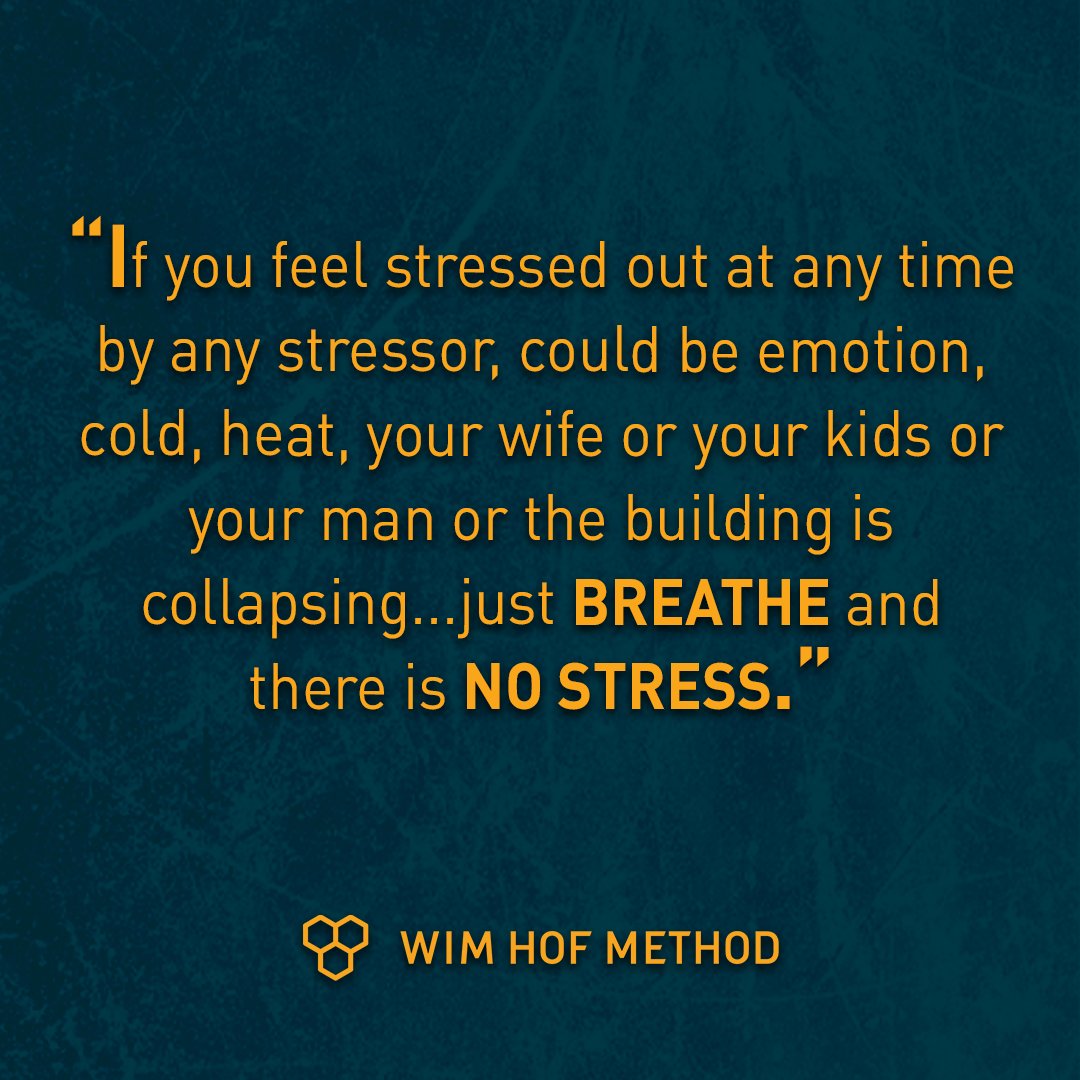
Herein, we evaluated the effects of a training program on the autonomic nervous system and innate immune response. However, both the autonomic nervous system and innate immune system are regarded as systems that cannot be voluntarily influenced. Acute activation of the sympathetic nervous system attenuates the innate immune response. Focus on the exhale and the inhale will naturally happen.Excessive or persistent proinflammatory cytokine production plays a central role in autoimmune diseases. Inhale through the nose and then exhale with a sharp burst by tightening your core.īe sure to contract your lower abdomen to forcefully push out all the air in your diaphragm and lungs during each exhale.Exhale completely in a short burst before inhaling.Place your hands on your knees or thighs with your palms facing upward.Sit or stand upright in a comfortable position and close your eyes.
#Wim hof breathing anxiety full#
Warning: You should not practice breath of fire on a full stomach, says Fidan Karamehmet, since you'll be squeezing your abdominal muscles which can cause nausea or cramping.Īccording to Fidan Karamehmet, these are the steps to do kapalabhati:

While there is little scientific research into the benefits of breath of fire, anecdotal benefits include boosting circulation and improving digestion, says Fidan Karamehmet. It is a core aspect of Kundalini yoga, a type of yoga designed to re-align your chakras, or the "energy centers" in your body. Kapalabhati, also known as breath of fire, is a breathing technique that may make you feel flush because it works your core, so much so that it can cause your face to become red, says Fidan Karamehmet. Go back and forth for two to three minutes.At the top of the inhale, use your ring finger to securely close the left nostril pausing for a brief second, then release the right thumb and exhale from the right nostril.Securely close your right nostril with your thumb and take a slow, deep inhale through the left nostril.Compared to the control group, the people who did the breathing technique had lower anxiety scores.Īccording to Abrams, these are the steps to do alternate nostril breathing: But there is research confirming this technique quells anxiety.įor example, in a small 2017 study, participants did alternate nostril breathing for 15 minutes before simulating public speaking. However, there is no scientific evidence backing this up. This activates both your logical half and creative half. It was developed to increase airflow to both sides of your brain, says Abrams. Your pursed lips will control the speed.Īlternate nostril breathing is a common breathing technique used in yoga and even used by Hillary Clinton during the 2016 election. Pause and purse your lips as if you are about to whistle.Participants had an improved respiratory rate - aka the number of breaths you take per minute - when practicing pursed-lip breathing, compared to those who didn't do the exercises.Īccording to Fidan Karamehmet, these are the steps to do pursed-lip breathing: This can limit airflow and make breathing difficult.Ī 2019 review looked at the impact of breathing exercises on patients with COPD.


Medical term: Chronic obstructive pulmonary disease (COPD) is a disease that causes inflammation in the lungs. It can help improve symptoms of shortness of breath, asthma, and COPD, says Nevsah Fidan Karamehmet, a breathing teacher with 20 years of experience, author of The Power of Breath, and the CEO and founder of Breath Hub. Pursed-lip breathing is a technique that slows down the breath and gives you more control over your breathing.


 0 kommentar(er)
0 kommentar(er)
